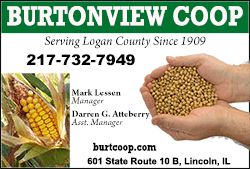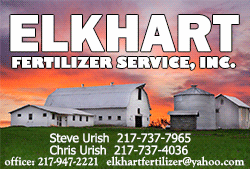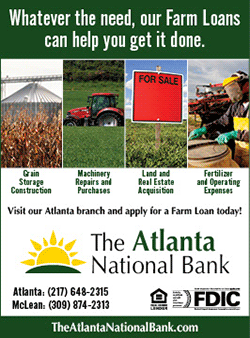|
 2501 Program 2501 Program
The 2501 Program is another name for the federal “Outreach and
Assistance for Socially Disadvantaged and Veteran Farmers and
Ranchers Program.” Under this program, individuals are not eligible,
but certain groups may get assistance.
According to the USDA, “Higher education institutions, eligible
conservation districts, eligible economic development corporations,
nonprofit organizations, and non-governmental community-based
associations or organizations that provide agricultural education or
agriculturally related services to socially disadvantaged or veteran
farmers and ranchers in their region are eligible and may apply for
a grant.” These groups include African-Americans; indigenous
Americans; Asian-Americans; Hispanic-Americans; Pacific Islanders;
refugees; and immigrants.

AMA
AMA stands for Agricultural Management Assistance. The AMA program
educates farmers on financial risk and related topics, such as
diversification, marketing or natural resource conservation
practices.
According to the USDA, “producers may construct or improve water
management structures or irrigation structures; plant trees for
windbreaks or to improve water quality; and mitigate risk through
production diversification or resource conservation practices,
including soil erosion control, integrated pest management, or
transition to organic farming.”
AMA is only available in 16 states: Connecticut, Delaware, Hawaii,
Maine, Maryland, Massachusetts, Nevada, New Hampshire, New Jersey,
New York, Pennsylvania, Rhode Island, Utah, Vermont, West Virginia
and Wyoming.
ARC and PLC
ARC stands for Agriculture Risk Coverage, and PLC stands for Price
Loss Coverage. The two programs are closely related, and they both
provide assistance when pricing doesn’t work out in the way an
agricultural business plans for.
The ARC program provides income support based specifically on
previous years’ base acres (not any current production) of covered
products. ARC payments are issued when the actual county crop
revenue of a covered commodity is less than the guaranteed crop rate
for a given year. PLC program payments are distributed when the
actual price of a covered product fails to meet the projected price
for that product.

BFRDP
BFRDP stands for Beginning Farmer and Rancher Development Program.
This program provides grants to help pay for education, mentoring,
and technical assistance initiatives for people just getting started
in agribusiness.
BFRDP grants are limited to “state, tribal, local, or
regionally-based networks or partnerships, such as an extension
service; a governing agency; a community service organization; or a
college or university.” These organizations use such grants to
educate agricultural students in their respective areas.
CFAP (a new program for the times)
CFAP stands for Coronavirus Food Assistance Program. The CFAP
provides financial assistance to farmers dealing with “a
five-percent-or-greater price decline,” or who otherwise face losses
due to supply disruptions, due to COVID-19.
The CFAP has gone through multiple phases in the last year.
Initially, only certain commodities were eligible for assistance.
Since then, nearly one hundred different commodities and products
have been added to the list of eligible products.
Currently, farmers can apply for assistance as part of the second
wave, or CFAP2. The program is currently being evaluated by the new
federal administration for possible alterations before any new
phases are announced.
EIDL
EIDL stands for Economic Injury Disaster Loans. Because of the
pandemic, small business owners, including agricultural businesses,
and nonprofit organizations in all states and territories can apply
for an Economic Injury Disaster Loan.
Eligibility includes qualified agricultural businesses with 500 or
fewer employees. Eligible agricultural businesses are defined as
“those businesses engaged in the production of food and fiber,
ranching, and raising of livestock, aquaculture, and all other
farming and agricultural related industries.”
FAS
FAS stands for Foreign Agricultural Service. The FAS is a federal
agency that deals with overseas programs. These programs include
foreign market development, international trade agreements and
negotiations, and the collection of statistics and market
information. The FAS also administers credit guarantees and food aid
programs, and helps increase income and food availability in other
countries.
[to top of second column] |

These are just a small handful of the many, many acronyms and
business programs that farmers may have to interact with. For a much
more detailed list, see the USDA glossary at https://www.usda.gov/glossary.
MFP
MFP stands for Market Facilitation Program. The MFP helps farmers
deal with financial problems when their products are affected by
foreign tariffs. Tariffs can often prevent access to traditional
export markets. MFP assistance is available for farmers working with
non-specialty crops, dairy, hogs, or specialty crops.
Assistance for non-specialty crops (corn, beans, grains, and other
common farm crops) is different from one county to the next, and
takes overall acreage into account when calculating assistance.
Payments are not dependent on which of those crops were planted in
previous years, and a producer is only eligible for crops that do
not exceed previous plantings.
PPP (pandemic related)
PPP stands for Paycheck Protection Program, and provides loans to
help businesses keep their workforce employed during the pandemic.
Borrowers may be eligible for PPP loan forgiveness. The PPP loans
come in two phases; a “First Draw” for first-time borrowers, and a
“Second Draw” for a second loan if necessary.

The PPP has undergone constant change since its initial creation
last year. According to the US Small Business Administration, the
most recent changes:
“Allow sole proprietors, independent contractors, and self-employed
individuals to receive more financial support by revising the PPP’s
funding formula for these categories of applicants; eliminate an
exclusionary restriction on PPP access for small business owners
with prior non-fraud felony convictions, consistent with a
bipartisan congressional proposal; eliminate PPP access restrictions
on small business owners who have struggled to make student loan
payments by eliminating student loan debt delinquency as a
disqualifier to participating in the PPP; and ensure access for
non-citizen small business owners who are lawful U.S. residents by
clarifying that they may use Individual Taxpayer Identification
Number (ITIN) to apply for the PPP.”
WHIP+
WHIP+ stands for Wildlife and Hurricane Indemnity Program Plus, and
is an extension of the original WHIP. The WHIP+ program offers
financial payments to agricultural producers who lose products due
to hurricanes, wildfires, and other qualifying natural disasters.
WHIP+ covers losses of crops as a result of disaster events; milk
losses due to poor weather; and losses of stored commodities.

Sources
Agricultural Management Assistance
ARC/PLC Program
Beginning Farmer and Rancher Development Program (BFRDP)
Coronavirus Food Assistance Program- Additional Assistance
COVID-19 Economic Injury Disaster Loans
Frequently Asked Questions 2501 Program
Market Facilitation Program
Paycheck Protection Program
USDA Foreign Agricultural Service
Wildfire and Hurricane Indemnity Program Plus
|